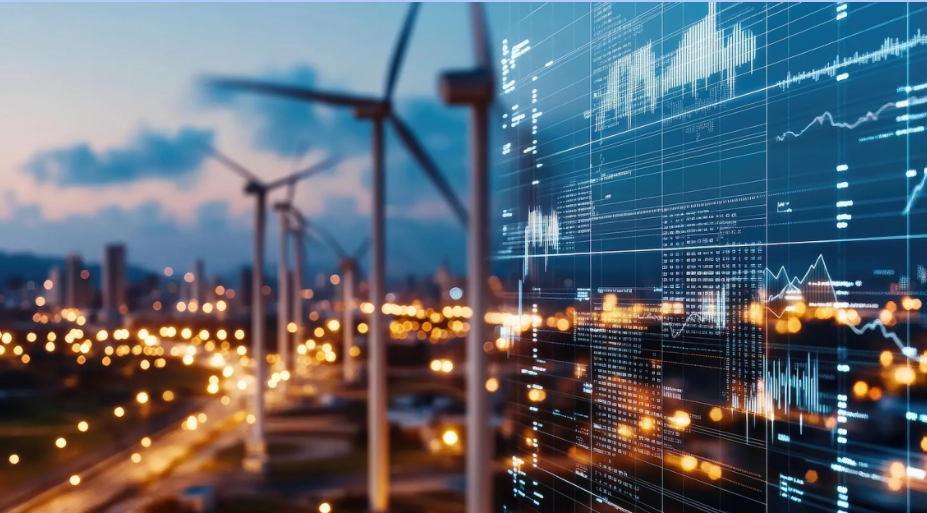Governments across the world are implementing policies to address the threat from climate change and to transition their economies to net zero. The changes will increasingly have macroeconomic consequences over horizons relevant for monetary policymakers. This column introduces a framework to assist central banks to understand the macroeconomic effects of the green transition and describes how economic agents are responding to climate policies in the near term, which in turn affects output and inflation through supply, demand, and financial channels.
As economic agents increasingly respond to intensifying climate change, the short-term macroeconomic implications of this adjustment are becoming apparent. As the climate transition affects output and inflation over policy-relevant horizons, it becomes a salient factor for central banks to consider in their monetary policy deliberations. The impacts of government policies such as taxes and subsidies, and changes to regulation can be studied by central banks. In addition, over the longer term, the climate transition is also likely to affect other key variables of interest to central banks such as the growth potential of the economy and the natural rate of interest. A recent report by the Network for Greening the Financial System develops a framework to assist central banks to understand the macroeconomic effects of the green transition (NGFS 2024a).
Transition impacts across economic agents
The shift towards a lower-carbon economy affects how firms produce, how households consume, and how governments spend and raise taxes. It also affects banks’ and investors’ behaviour, particularly through their management of transition-related risks and opportunities, and it has international spillover effects.
For firms, the green transition necessitates increased investment in low-carbon technologies and reallocation of existing investment to transition-relevant activities. Changes in government policy and regulation, consumer demand trends, and the introduction of new technologies will all affect firms’ costs, productivity, production, and profit patterns, and their credit and financing operations.
For households, changes in consumer prices, wages, and asset prices associated with the transition will affect income, wealth, and saving patterns. For example, carbon pricing policies can raise energy prices in the short term but lower prices in the longer term through the shift to cheaper renewable energy sources. Changing preferences can further shift behaviour in terms of saving, spending, and labour market choices.
For governments, the green transition also directly impacts fiscal balances, particularly when delivered through measures such as carbon taxes and green subsidies. Countries reliant on fossil fuel revenues may see lower tax revenues, while fossil fuel importers and economies endowed with critical minerals can benefit from new opportunities as they switch away from fossil fuels.
Economies are also exposed to international spillover effects from transition developments in trading partners, including through the effects on global value chains and patterns of comparative advantage.
Figure 1 shows how impacts from different types of transition drivers can propagate through the economy. Such impacts can be further amplified through financial channels and feedback effects, as expectations for the pace and effectiveness of the green transition influence consumer, firm, and investor behaviour. These will be particularly relevant for central banks as they can affect market interest rates and credit conditions, influencing borrowing costs and investment decisions across the economy.
Figure 1 Propagation of effects from transition drivers to the macroeconomy


Source: NGFS (2024a).
Overall, the nature of the green transition – whether orderly or disorderly – will play a crucial role in determining its macroeconomic impact. An early and orderly transition offers the potential to minimise any economic costs. In contrast, a disorderly or delayed transition with unanticipated changes for economic agents will have more pronounced negative macroeconomic effects (IMF 2022, Mehrhoff 2023, Hassler et al. 2024).
Climate mitigation policies
Transition policies broadly fit into three buckets: (i) carbon pricing; (ii) government subsidies and government investment; and (iii) non-market-based climate policies such as regulations, and standards. The aggregate macroeconomic impacts of these policies will vary depending on the design, pace, stringency, and implementation of such policies, including their transparency, predictability, and degree of coordination across countries (Pinheiro de Matos and Gili 2022).
Even if these policies affect inflation and output in the short-term, their intention is to avoid the negative consequences of unmitigated climate change in the longer run (NGFS 2024b).
In the short term, carbon pricing policies may look like a negative supply-side shock, increasing firms’ costs and prices for consumers and putting upward pressure on inflation (Breckenfelder et al. 2023, Känzig 2023). But their impact on output will also depend on how revenues are recycled back to the economy. Over time, achieving the intended reduction in emissions helps support the economy compared with scenarios of unmitigated climate change.
For subsidies, the macroeconomic impacts will depend on their design and on who receives them: a subsidy to the price of green energy could reduce inflation in the short run, but boost output through increased demand (Schnabel 2022). Conversely, an investment subsidy may directly push up inflation alongside aggregate demand. In the longer run, the funding arrangements for the subsidy will be a key determinant of its impact.
Non-market-based interventions (such as regulatory standards, production quotas or bans, and disclosure requirements) can be contractionary and inflationary in the short run as they introduce compliance requirements, but may be expansionary over time as their intended effects materialise.
Structural transition dynamics: Innovation in green technologies and changes in preferences
The climate transition will also lead to more gradual changes to the economy. These can occur through market forces or shifts in preferences as firms and consumers adjust their expectations and behaviour to climate change. Some of these may not currently fall within the monetary policy horizon or take the form of a cyclical shock that monetary policy may be called to react to. Still, they will be increasingly relevant for central banks’ understanding of the longer-term productive capacity of the economy.
Increased green investment will affect aggregate output. These impacts will depend on whether investments are additional or merely redirected from other sectors and on the multiplier effects on economic activity. Generally, green investments generate larger investment multipliers than carbon-intensive investments but face higher upfront costs (Batini et al. 2022). Inflation is most likely to be impacted by the effect of these investments on energy supply, which could lead to an increase in inflationary pressures in the short term, giving way to more deflationary medium- and long-term dynamics.
Impacts on monetary policy
As with other shocks, the overall macroeconomic impacts of climate transition policies will determine the response of monetary policy. While the effects of these policies have been estimated to be modest so far, these are likely to increase in the future as governments take further action to meet net-zero targets. Monetary policymakers may therefore face a prolonged relative price shock to manage.
Uncertainty about the shape of the transition – including the policy credibility, technological developments, the behavioural response of economic agents, and the lack of forward-looking data to estimate price elasticities and substitution effects – could also complicate central banks’ understanding of how different transition drivers impact the economy.
Conclusion
The green transition is increasingly impacting macroeconomic outcomes over the shorter-term horizon which is most relevant for monetary policy. It is likely to affect the behaviour of all agents, sectors and countries, albeit in different ways.
The transition will also result in deeper, structural changes that monetary policymakers will need to understand.
We have made a start in estimating these macroeconomic impacts through the work of the NGFS and its members, but more work will be needed to understand the effects on both our economies and how monetary policy should respond to them.
source: cepr.org





